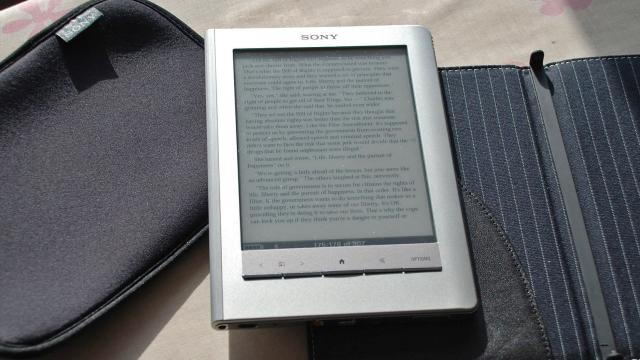Pop quiz: which big company was the first to popularise electronic paper e-readers with consumers by making it easy to find and load ebooks and other digital documents? If you answered Amazon, we’ll see you in summer school, because Sony’s e-readers outdated the Kindle by years. Unfortunately, the company will soon be out of that business entirely as it plans to finally shut down its Reader desktop software as well.
Although the Rocket eBook and the Sony Data Discman were handheld devices created for the sole purpose of reading ebooks and documents, e-readers as we know them today are devices that specifically use electronic paper technology to replicate the look of actual printed pages. E Ink, the most recognisable name in electronic paper, was only established as a company in 1997, but just a few years later in 2004, Sony would release the first true e-reader device featuring E Ink’s screen technology: the Sony Librie.
Two years later, the Sony PRS-500, or “Portable Reader System,” arrived, sporting a better E Ink screen with faster refresh rates and a more streamlined design that would influence e-readers for years to come. During the early aughts, Sony would release several upgraded versions of the PRS-500, including models with touchscreens and/or screen lighting, alongside more accessible versions that traded advanced features and functionality for affordability. But in 2007, Sony would be introduced to its biggest competition in the e-reader space with the arrival of Amazon’s Kindle. Unlike the Sony Readers, which were dependent on the company’s Reader desktop software for finding and buying books, the Kindle could purchase books itself through a bundled cellular connection.
The Amazon Kindle was an instant success, and it seemed like Sony didn’t have its heart in going to war over the e-reader market. In August of 2014, Sony officially announced that it wouldn’t be releasing another e-reader targeted at consumers, following news from earlier in the year that Sony Reader’s ebook store was closing and that users would have to transfer their purchased content to the Kobo book store. Although Sony did step up to the plate for one more swing at E Ink devices with the super-sized Sony Digital Paper DPTS1 e-note targeted at the business market, those devices would eventually be discontinued, as well.
Those still desperately holding onto their Sony e-readers (the last official model, released nine years ago, was the PRS-T3) may finally be forced to upgrade now, as Sony recently announced that its Sony Reader desktop software, which is similar to what iTunes was to the iPod, will be no longer available for download as of March 31, 2023. Existing installations of the Reader software will still continue to function, but those hoping to install it again one day on another machine will want to make sure they download and archive a copy of the installer. As of April 1, it will no longer be available from Sony’s website.
Even the most affordable, entry-level e-reader available today will far outperform the most advanced Reader model that Sony ever shipped, so this news is really only disappointing because it’s another step closer to Sony being completely forgotten as the e-reader trailblazer.
